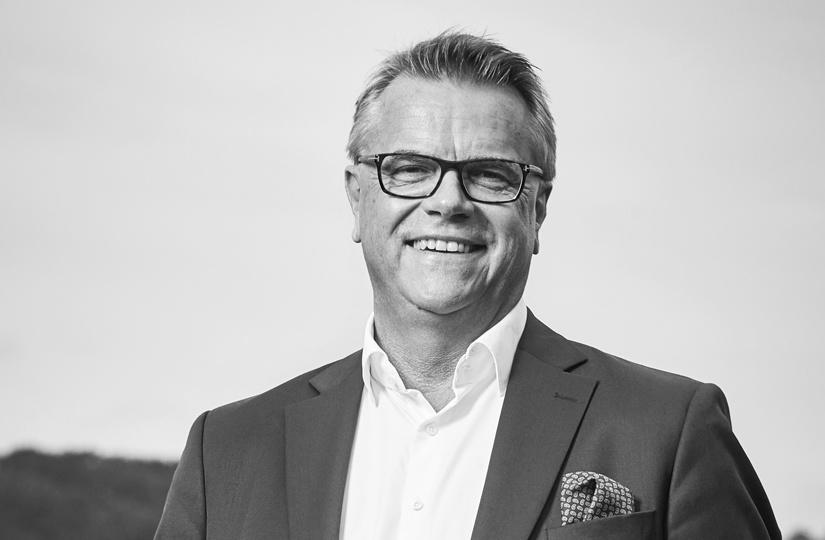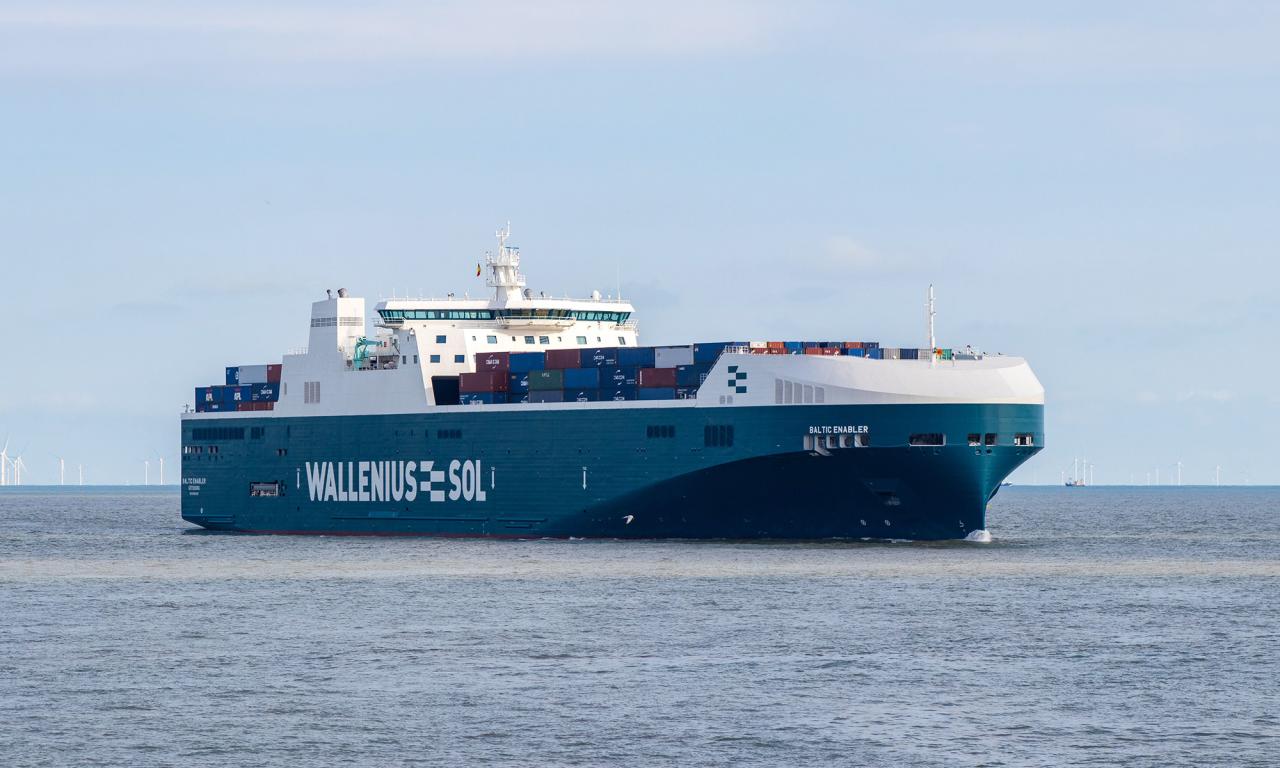Baltic Enabler named in Zeebrugge

Award-winning, record-breaking vessel Baltic Enabler officially received her name at a traditional ceremony in the Port of Antwerp-Bruges on 2 November 2022.
It all began four years ago when WALLENIUS SOL decided to create a sustainable infrastructure at sea for industries located around the Gulf of Bothnia. The world’s biggest ice-rated ConRo vessels has since been delivered and entered service. The first vessel was named earlier during the autumn in the Port of Skellefteå, and on Wednesday 2 November it was the turn of Baltic Enabler to be named in Zeebrugge.
More than 100 people gathered at the PSA Zeebrugge terminal when WALLENIUS SOL’s Managing Director Ragnar Johansson gave his welcome speech. His wife Anette Johansson was at his side, and in her capacity as the Baltic Enabler´s godmother, she christened the 242 meter long ship in champagne.
“I’ve followed the ship from the beginning of the project right through to delivery, and I’m convinced that Baltic Enabler will do her part for the climate, the environment and especially for industry in the north and its suppliers in the south,” says Anette Johansson.

Baltic Enabler and her sister ship Botnia Enabler are both icebreakers with a deadweight of 28,000 tonnes. They have a cargo capacity of 6,442 lane metres (962 TEU) with room for trailers, containers, industrial loads and high or heavy project loads. The name Baltic Enabler has its origins in WALLENIUS SOL’s business idea of being an enabler for base industries around the Gulf of Bothnia and the Baltic Sea.
“These enormous RoRo vessels are a guarantee for our customers, their growth and their long-term planning. Zeebrugge will act as a hub for Scandinavia to an even greater extent than it does today. Thanks to the extra capacity we expect to see also more transshipment cargo, mainly to UK, Ireland, Spain and Portugal, says Theo Milliau, Terminal Manager at PSA Zeebrugge.

The Enablers will run weekly between Zeebrugge-Antwerp-Kokkola-Oulu-Kemi-Skellefteå and Travemünde. The energy-efficient multi-fuel vessels emit 63 percent less greenhouse gases than the vessels they are replacing, and when not running on LNG, CO2 emissions will be 74 percent lower than the average emissions from other ice-rated RoRo tonnage on the market. This is thanks to their innovative hull design and the size of the vessels.
Baltic Enabler
Ice class: 1A Super
Type of vessel: ConRo
LOA: 242 m
Beam: 35.2 m
Deadweight: 28,000 tonnes
Cargo capacity: 6,442 Lane metres
Max speed: 20 knots
Engines: Multi-fuel (LNG, LBG, diesel and synthetic diesel)
Environmental benefits of the new vessels
- 57% reduced fuel consumption per transported unit
- 63% reduced greenhouse gas emissions per transported unit
- 99% reduction in oxides of sulphur (SOx), oxides of nitrogen (NOx) and particulate emissions (PM2.5)
In comparison with the vessels being replaced (fuelled by MGO).
Source: Report U6059, IVL Swedish Environmental Research Institute











